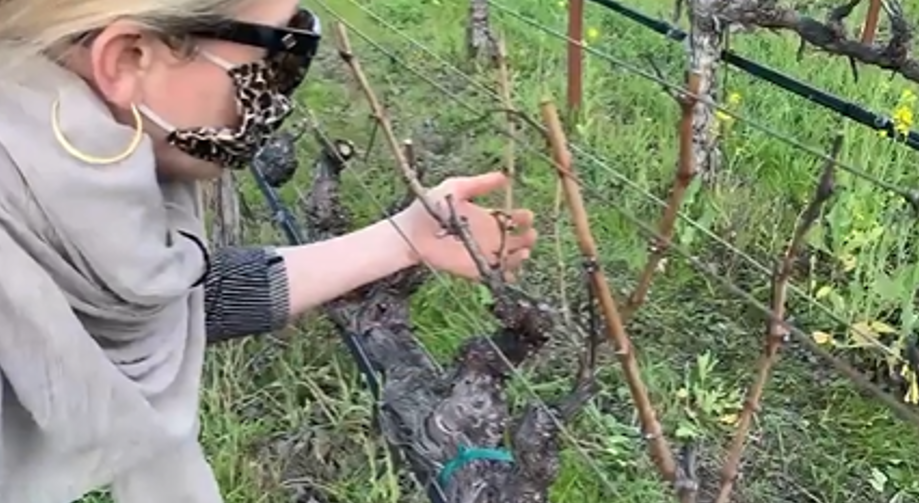Pruning a vine is an act that seems so simple – and yet completely terrifies me. Not because I may snip a finger, although that’s bound to happen, but because it is an act that directly impacts not one but two harvests to come, as well as affect the health of the vine in the long run.
The decisions you make while pruning are based on several elements: whether the vine is spur or cane pruned (this is a question of how much old wood is connected to the trunk and laid down on the trellising wire); how vigorous the vine is; and where the buds (nascent shoots) are located, which will determine the fruitfulness of the harvest and future trellising decisions when you prune again the following year, as you are anticipating what wood will grow during that upcoming year to be able to be used as a potential spur or cane.
It’s like multi-dimensional chess, imagining where the shoots will emerge in the coming month, how they will lie on the trellising wire, and how it will impact the ultimate shape of the individual vine in years to come. Pruning leaves open wounds in the wood through which diseases can enter the vine, and as they dry out, that dieback can actually inhibit sap flow, the highway of nutrients that connect the roots, which pull nutrients from the soil and provide access to water, to the leaves, which are essential for photosynthesis.
Several methods of pruning have been developed over time in order to extend the life of a vine and preserve a cleared path for the sap to flow (incidentally, they are predominantly Italian companies: Uva Sapiens and Simonit e Sirch); these methods include leaving enough space from the cut back to the major arteries in the permanent wood architecture to let that wood dry out without impacting the flow of nutrients; the bits of dead wood can then be snipped off the following vintage without impacting the vine. I am grateful for today’s lesson at The Napa Valley Reserve with vine master Francisco and vineyard manager Mark Griffin coaching me through this game of chess.

